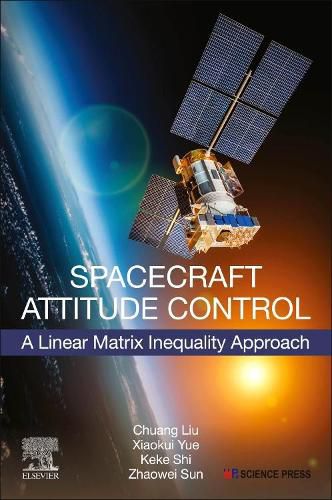Readings Newsletter
Become a Readings Member to make your shopping experience even easier.
Sign in or sign up for free!
You’re not far away from qualifying for FREE standard shipping within Australia
You’ve qualified for FREE standard shipping within Australia
The cart is loading…






Spacecraft Attitude Control: A Linear Matrix Inequality Approach solves problems for spacecraft attitude control systems using convex optimization and, specifi cally, through a linear matrix inequality (LMI) approach. High-precision pointing and improved robustness in the face of external disturbances and other uncertainties are requirements for the current generation of spacecraft. This book presents an LMI approach to spacecraft attitude control and shows that all uncertainties in the maneuvering process can be solved numerically. It explains how a model-like state space can be developed through a mathematical presentation of attitude control systems, allowing the controller in question to be applied universally. The authors describe a wide variety of novel and robust controllers, applicable both to spacecraft attitude control and easily extendable to second-order systems. Spacecraft Attitude Control provides its readers with an accessible introduction to spacecraft attitude control and robust systems, giving an extensive survey of current research and helping researchers improve robust control performance.
$9.00 standard shipping within Australia
FREE standard shipping within Australia for orders over $100.00
Express & International shipping calculated at checkout
Stock availability can be subject to change without notice. We recommend calling the shop or contacting our online team to check availability of low stock items. Please see our Shopping Online page for more details.
Spacecraft Attitude Control: A Linear Matrix Inequality Approach solves problems for spacecraft attitude control systems using convex optimization and, specifi cally, through a linear matrix inequality (LMI) approach. High-precision pointing and improved robustness in the face of external disturbances and other uncertainties are requirements for the current generation of spacecraft. This book presents an LMI approach to spacecraft attitude control and shows that all uncertainties in the maneuvering process can be solved numerically. It explains how a model-like state space can be developed through a mathematical presentation of attitude control systems, allowing the controller in question to be applied universally. The authors describe a wide variety of novel and robust controllers, applicable both to spacecraft attitude control and easily extendable to second-order systems. Spacecraft Attitude Control provides its readers with an accessible introduction to spacecraft attitude control and robust systems, giving an extensive survey of current research and helping researchers improve robust control performance.